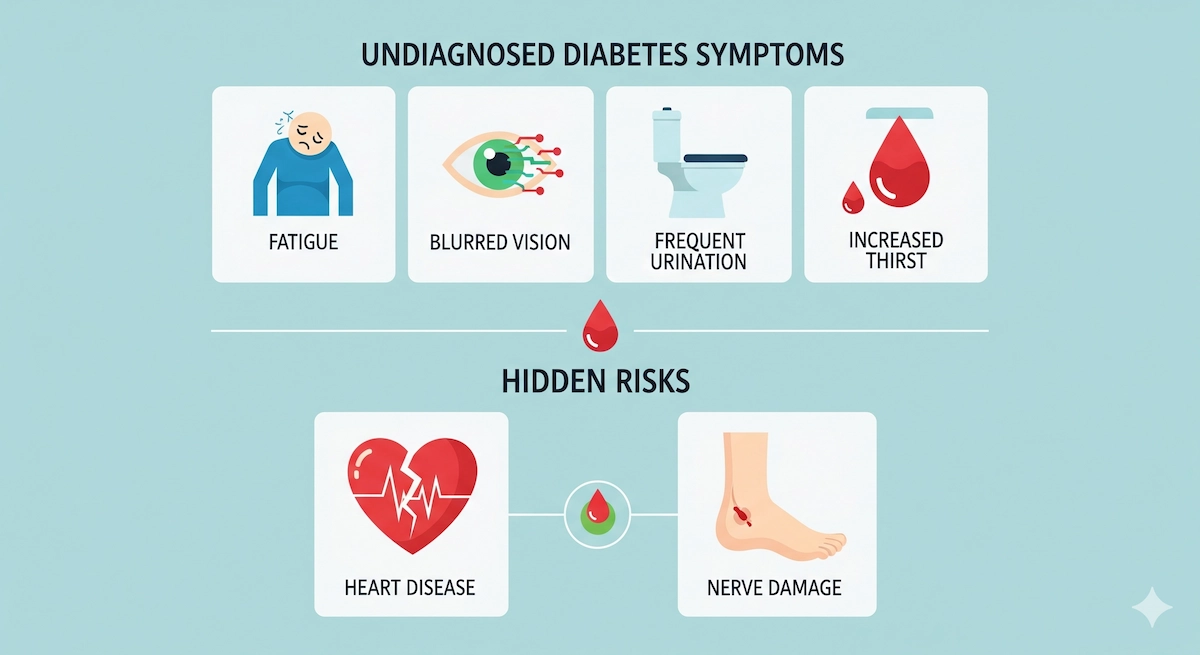GloNews10

Undiagnosed Diabetes Worldwide has become a silent health emergency that is challenging communities and healthcare systems globally. According to a new international study, nearly 44% of people living with diabetes are unaware of their condition. This alarming statistic highlights how late detection often means the disease has already started damaging vital organs.
In today’s world, Undiagnosed Diabetes Worldwide is not just a medical issue—it is a global health crisis. Across every continent—Asia, Africa, Europe, and the Americas—undiagnosed cases are steadily rising. If immediate action is not taken, experts warn that the burden could double within the next two decades.
The biggest risk of Undiagnosed Diabetes Worldwide is that the damage happens silently. Early symptoms such as fatigue, frequent urination, excessive thirst, unexplained weight loss, and blurred vision are often ignored. By the time diagnosis occurs, serious complications may already be present.

These complications include heart disease, kidney failure, nerve damage, and vision loss. Each of these not only reduces quality of life but also creates a huge social and economic burden, adding strain to healthcare systems.
According to the World Health Organization, undiagnosed diabetes is particularly widespread in developing countries, where healthcare access and screening facilities remain limited.
One major reason behind the rise of Undiagnosed Diabetes Worldwide is the lack of awareness. Many people view diabetes as just a “sugar problem” and underestimate its long-term dangers.
Some key reasons include:
A study from the National Institutes of Health shows that 70% of diabetes complications can be avoided if preventive screening and early treatment are made available.
Undiagnosed Diabetes Worldwide is not just a patient-level issue—it impacts economies and entire health systems.
Global experts estimate that trillions of dollars can be saved if preventive and early detection strategies are aggressively implemented.
Even after diagnosis, treatment and management gaps persist. Studies reveal that many diagnosed patients struggle to keep their blood sugar under control.
Key reasons include:
Unless governments, NGOs, and healthcare providers work together to bridge this treatment gap, the future of diabetes care will remain uncertain.
To combat this silent epidemic, a multi-level strategy is required:
Health experts warn that if urgent action is not taken, Undiagnosed Diabetes Worldwide could become one of the deadliest health crises of the 21st century. However, there is still hope. With early detection, preventive measures, affordable treatment, and technology-driven solutions, this epidemic can be slowed down significantly.
Undiagnosed Diabetes Worldwide is a growing threat that puts millions of lives at risk. It is more than just a medical problem—it is a global health challenge. The only way to reduce the rising numbers is through prevention, awareness, and treatment access. Governments, healthcare providers, and individuals must act together to stop this silent killer before it’s too late.